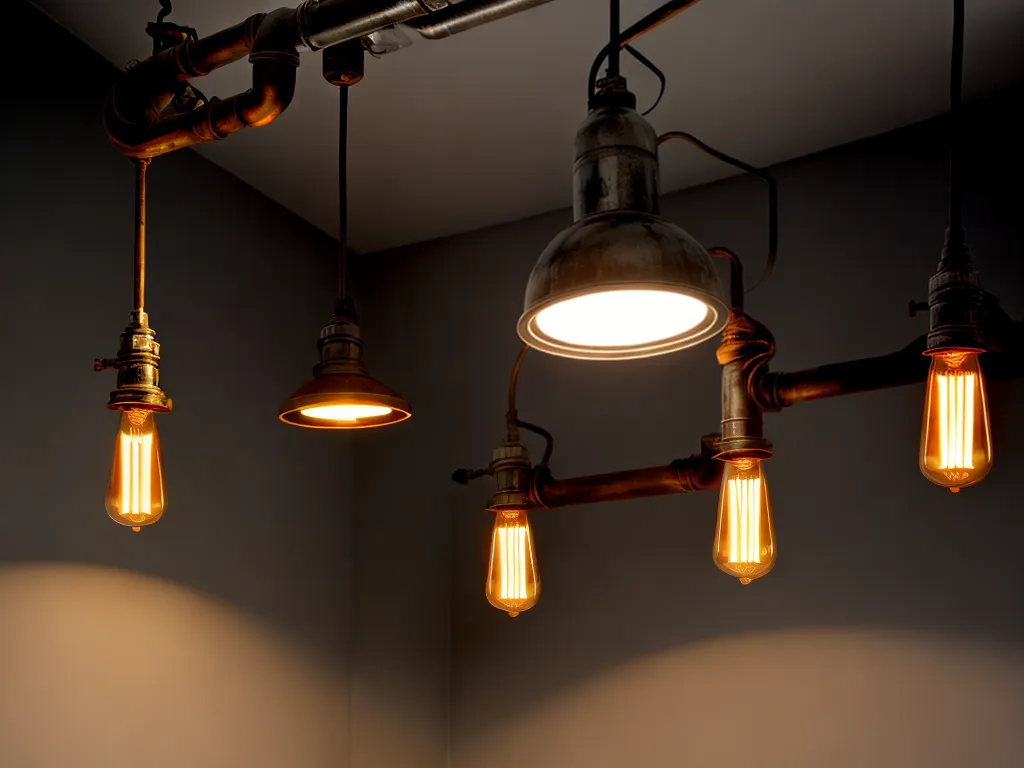
The 1930s saw major advancements in industrial lighting techniques and technologies. Factories and industrial spaces required bright, even lighting to improve worker safety and productivity. New lamps, fixtures, and design principles created more effective lighting. This article will explore the key innovations in depth.
Early Industrial Lighting
In the early 20th century, industrial lighting mainly relied on incandescent lamps. These provided inadequate illumination by today's standards. Factories typically used bare bulbs or basic reflector shades to cast light. This created uneven, glare-filled environments with dark shadows. Workers strained to see properly. Industrial spaces also used large carbon-arc lamps. These emitted a harsh, intense light in a small area.
By the 1930s, electric lighting became more widespread. New options emerged to improve visibility in factories, mills, and workshops. Engineers and manufacturers applied new concepts like planned layouts and glare reduction. This marked a shift from simply providing basic illumination. The goals now included tailoring lighting to specific tasks and work areas.
New Lamp Technologies
The 1930s saw the emergence of new lamp types for industrial uses:
-
Mercury vapor lamps - These lamps passed an electric current through vaporized mercury to create UV light. The inside of the bulb was coated with phosphors that converted the UV into usable visible light. Mercury lamps produced a relatively white light at high efficiencies.
-
High-pressure sodium lamps - These discharge lamps contained sodium vapor under high pressure. This generated a monochromatic yellow light. High-pressure sodium provided efficient lighting despite the yellow color.
-
Metal halide lamps - An improvement on mercury lamps, these used metal halides in the vapor. This allowed for better color properties by tweaking the halide mixtures.
These new lamps offered longer life, higher output, and better efficiency than incandescents. But early models still had limitations like slow starting and warm-up times.
Fixture Design Advancements
The 1930s saw fixture designs transition from utilitarian to engineered. New features improved lighting quality:
-
Reflectors - Parabolic reflectors directed light downward in a flood pattern. Reflector design evolved to create wider, more uniform light distribution.
-
Refractors - Prismatic refractors over the lamps controlled glare and softened shadows.
-
Louvers - Baffles, shields, and louvers cut down on glare from exposed bulbs.
-
Task lighting - Fixtures mounted closer to work areas provided localized illumination. Bench lights and work station lights emerged.
-
High-bay lighting - Lighting mounted at the ceiling peak brought abundant ambient lighting to large industrial interiors.
These fixture improvements increased efficiency while creating better lit environments.
New Design Principles
In the 1930s, engineers developed new lighting design principles for industrial spaces:
-
Planned layouts - Lighting plans matched lighting types to specific work area needs. Different lamp colors, distributions, and intensities were used deliberately.
-
Glare minimization - Glare control became a priority.Indirect lighting, shielded fixtures, and surface-mounted lights reduced glare on tasks.
-
Contrast control - Balancing surface brightness and modeling created a visually comfortable environment. High contrasts from the past were reduced.
-
Efficiency - Maximizing lighting utility and reducing waste became important. Higher lamp and fixture efficiencies drove down energy use.
Impacts on Workplaces
The new industrial lighting tactics of the 1930s had major impacts on illuminated work environments:
-
Increased worker productivity - More comfortable, glare-free lighting reduced eye strain and fatigue. This allowed for greater focus and productivity.
-
Improved safety - Uniform, shadowless lighting prevented accidents. Workers could better see hazards and perform tasks.
-
Better morale - Pleasant lighting environments boosted morale. Increased illumination made spaces seem clean and modern.
-
Greater precision - Tailored task lighting aided detailed, precision work. Improved color rendering assisted with tasks relying on color accuracy.
-
Flexibility - Different lighting systems could be combined to meet changing needs. Workplaces could add task lights or alter lamps.
Overall, the 1930s marked a turning point for intelligent, worker-centric industrial lighting. While more progress lay ahead, these innovations established a stronger technical foundation for the future. They brought improved comfort, safety, and functionality to illuminated industrial work.